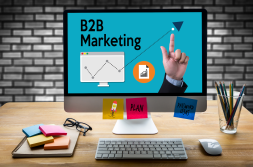 Marketing is all about ensuring your target audiences successfully receive your brand’s message. So how do you ensure your message isn’t misinterpreted? How do you protect your brand from backlash in today’s highly attentive market?
Marketing is all about ensuring your target audiences successfully receive your brand’s message. So how do you ensure your message isn’t misinterpreted? How do you protect your brand from backlash in today’s highly attentive market?
Here are some of my suggestions to preserve your brand’s intended messaging:
Pay Attention to Common Sensitivities
Some examples of societal sensitivities are gender, sexual orientation, and race. Take a look at last year’s Dove ad, for instance, which many people interpreted as racist.
Before launching a marketing campaign, discuss sensitivity precautions with your marketing department or agency. Together, you may determine that setting up a focus group is in your business’s best interest. Sharing your marketing material with a controlled group of consumers is a precious form of market research. With it, you can test whether or not your messaging resonates with your target audiences. If multiple people come back with the same sensitivity concerns, you can make any necessary changes to the campaign before you go live.
Be Wary of Pop Culture References
While you may want to use current pop culture references or trends in your marketing, it’s important to know their historical background and what they really mean. Because of the rise of social media, marketing messages are more public and accessible than ever, allowing the general public and consumers to be more critical of businesses in an open forum. Not even art is exempt from political correctness, as the Art Gallery of Ontario recently acknowledged by issuing an apology for “racist costumes” at a fundraiser.
Avoid Getting Political
The reason many businesses succeed where others fail is because they learn from other businesses’ mistakes. For instance, you can learn from Pepsi’s marketing mishap last year. Marketing campaigns that choose to touch on political issues must address them with empathy and sincerity. Otherwise, your business may come across as selfish for taking advantage of a serious matter for personal gain.
Research Target Market Influencers
Where multi-billion-dollar companies use celebrity endorsements, you can use influencer marketing to maximize your audience reach. However, you must be extremely careful that the public figures that represent your brand have not been involved in past controversies. Before selecting influencers, thoroughly research what they stand for to ensure their values align with yours.
As a business owner, it is essential that you consider how every detail of your campaign could affect consumers. Even after reviewing your marketing campaign from every angle, there could be unexpected backlash. For this reason, you may want to have an action plan in place. Last month, a Starbucks PR nightmare was prevented because of the company’s swift response to rectify a racial controversy by implementing racial bias training. You could also consider hiring a community manager to advocate for your brand on social media.
For a second pair of eyes on an upcoming campaign or for further advice on how to recover from a recent backlash, contact CreativeWorks Marketing today.
 As a business owner, you probably hear about the importance of branding all the time. However, I’ve seen many small business owners confuse selling their product with selling their brand. You already thoroughly understand your product, but since
As a business owner, you probably hear about the importance of branding all the time. However, I’ve seen many small business owners confuse selling their product with selling their brand. You already thoroughly understand your product, but since  Congratulations, your company is approaching a significant milestone! This is cause for celebration. You’re hyped, your employees are hyped, but how can you turn this into a marketing opportunity that also gets your clients hyped?
Congratulations, your company is approaching a significant milestone! This is cause for celebration. You’re hyped, your employees are hyped, but how can you turn this into a marketing opportunity that also gets your clients hyped? With 2018 now in full force, it’s likely you have your strategic business goals prepared and ready for execution. Hopefully, the marketing aspect of your business received just as much love during strategic planning sessions for this year, but in the off chance it didn’t, or if you’re looking to optimize your marketing plan for the new year, read on!
With 2018 now in full force, it’s likely you have your strategic business goals prepared and ready for execution. Hopefully, the marketing aspect of your business received just as much love during strategic planning sessions for this year, but in the off chance it didn’t, or if you’re looking to optimize your marketing plan for the new year, read on! What happens when brands talk the talk but don’t walk the walk? Well, recently, employees from one of Canada’s largest and most-recognized telecommunications company have
What happens when brands talk the talk but don’t walk the walk? Well, recently, employees from one of Canada’s largest and most-recognized telecommunications company have 

 Next in our “What Does It Really Mean” series is Native Advertising. This is another one of those confusing industry buzzwords, but one that’s important because native advertising is everywhere. With more people turning off traditional forms of advertising, marketers are employing more subtle forms of messaging. You may have engaged with native advertising and not even know it. Let me demystify native advertising for you.
Next in our “What Does It Really Mean” series is Native Advertising. This is another one of those confusing industry buzzwords, but one that’s important because native advertising is everywhere. With more people turning off traditional forms of advertising, marketers are employing more subtle forms of messaging. You may have engaged with native advertising and not even know it. Let me demystify native advertising for you. In my
In my  With almost all business being conducted online it’s no wonder that businesses, not just individuals, are concerned about what the ‘online world’ is saying about them. From sites where employees can review their managers to social reviews speaking about brand experience, businesses today need to consider adding reputation management to their online marketing mix.
With almost all business being conducted online it’s no wonder that businesses, not just individuals, are concerned about what the ‘online world’ is saying about them. From sites where employees can review their managers to social reviews speaking about brand experience, businesses today need to consider adding reputation management to their online marketing mix.